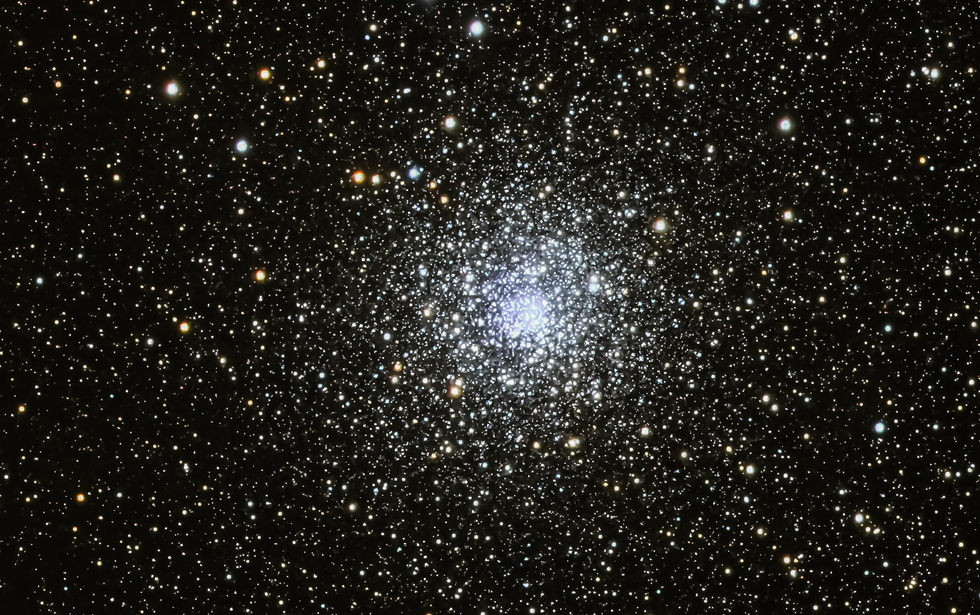Globular Cluster M 9
Globular Cluster M 9
M9 (also known as M9 or NGC 6333) is a globular cluster in the constellation Ophiuchus. M9 is easily identified, on the line that joins the two stars η Ophiuchi and θ Ophiuchi, closer to the first; It can be observed under a clear, dark sky with simple medium-powered binoculars, such as a 10x50, in which it shows itself as a small, clear, hazy halo. A telescope with an aperture of 80-120mm does not allow the resolution in stars to begin and the cluster remains of undefined appearance, although some structures such as the nucleus and the halo can already be distinguished; A 200mm instrument is able to detect some thirteenth magnitude stars, especially to the east and south of the core.
M9 can be easily observed from most populated areas of the Earth, thanks to the fact that it is located at a declination that is not strongly southern: in some areas of Northern Europe and Canada, beyond the Arctic Circle, it is never observable; from the southern hemisphere, on the contrary, M9 is clearly visible and high on austral winter nights. The best time for observing it in the evening sky is between May and August.
M9 can be easily observed from most populated areas of the Earth, thanks to the fact that it is located at a declination that is not strongly southern: in some areas of Northern Europe and Canada, beyond the Arctic Circle, it is never observable; from the southern hemisphere, on the contrary, M9 is clearly visible and high on austral winter nights. The best time for observing it in the evening sky is between May and August.
SPECIFICATIONS
Telescope
CHI-1-CMOS
Camera
QHY 600M
Location
EL SAUCE OBSERVATORY, SPAIN
Date of observation
1-2-May 2023
Filters
LRGB
Processing
Pixinsight and Photoshop
Credits
Credit Sauro Gaudenzi / Data Telescope Live


